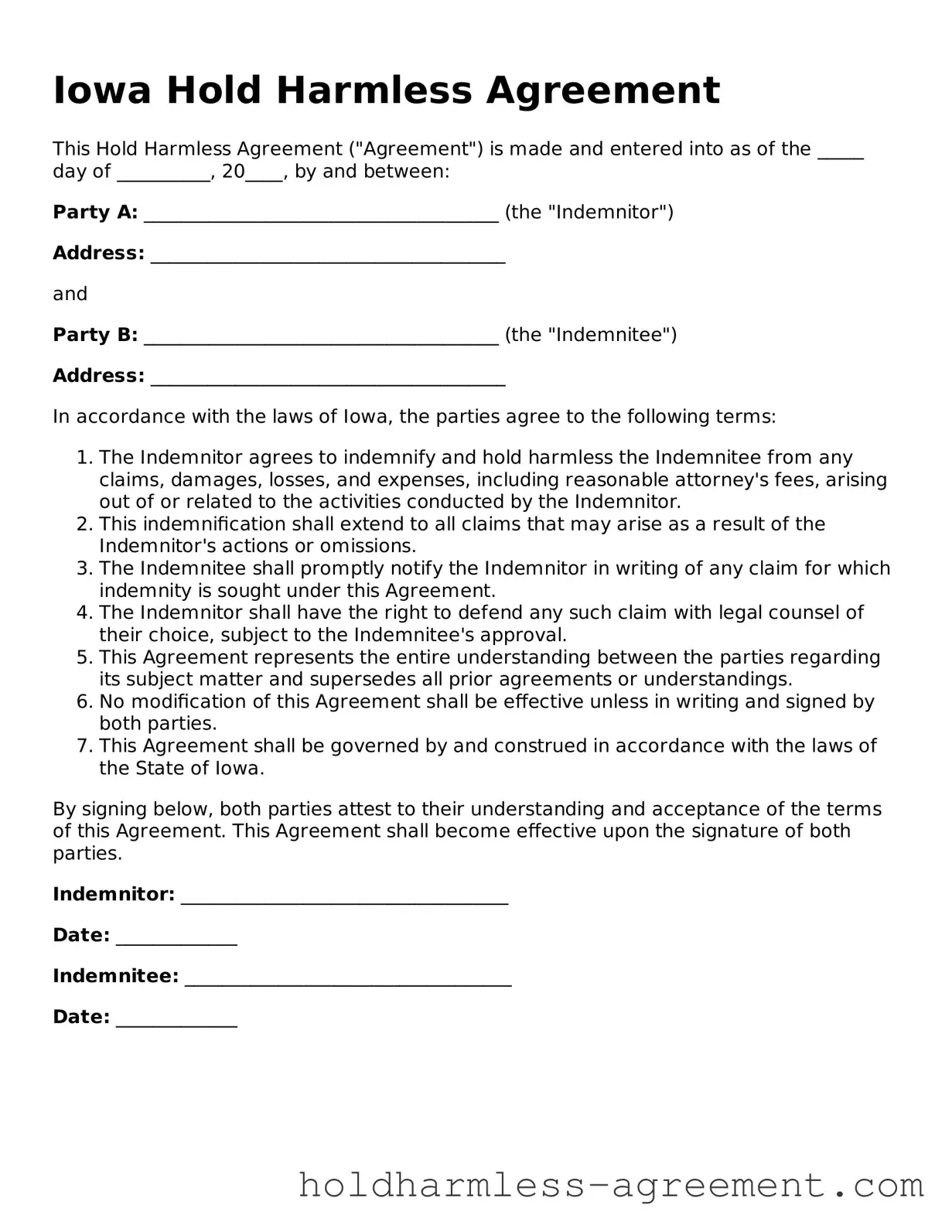What is an Iowa Hold Harmless Agreement?
An Iowa Hold Harmless Agreement is a legal document that protects one party from liability for certain risks or damages associated with an activity or event. This agreement is often used in various situations, such as property rentals, events, or construction projects. By signing the agreement, one party agrees to assume responsibility for any potential injuries or damages that may occur, thereby relieving the other party of legal responsibility.
Who typically uses a Hold Harmless Agreement in Iowa?
Hold Harmless Agreements are commonly used by:
-
Landlords and tenants during rental agreements.
-
Event organizers and participants in recreational activities.
-
Contractors and property owners in construction projects.
-
Businesses hosting events or activities that involve public participation.
These agreements are beneficial for any party seeking to mitigate risk and clarify liability responsibilities.
What are the key components of a Hold Harmless Agreement?
A comprehensive Hold Harmless Agreement should include the following elements:
-
Identification of parties:
Clearly state the names and roles of all parties involved.
-
Scope of the agreement:
Define the specific activities or events covered by the agreement.
-
Liability waiver:
Outline the extent to which one party agrees to waive claims against the other.
-
Indemnification clause:
Specify that one party will compensate the other for any losses or damages incurred.
-
Signatures:
Ensure that all parties sign and date the agreement to make it enforceable.
Is a Hold Harmless Agreement enforceable in Iowa?
Yes, a Hold Harmless Agreement can be enforceable in Iowa, provided it is properly drafted and executed. Courts generally uphold these agreements as long as they are clear, voluntary, and not against public policy. However, certain limitations may apply, particularly in cases involving gross negligence or willful misconduct.
How can I create a Hold Harmless Agreement for my situation?
To create a Hold Harmless Agreement, consider the following steps:
-
Determine the specific risks associated with your activity or event.
-
Consult with a legal professional to ensure the agreement complies with Iowa laws.
-
Draft the agreement, including all key components mentioned earlier.
-
Review the document with all parties involved to ensure understanding and agreement.
-
Have all parties sign the agreement before the activity or event takes place.
Taking these steps can help ensure that the agreement effectively protects all parties involved.
